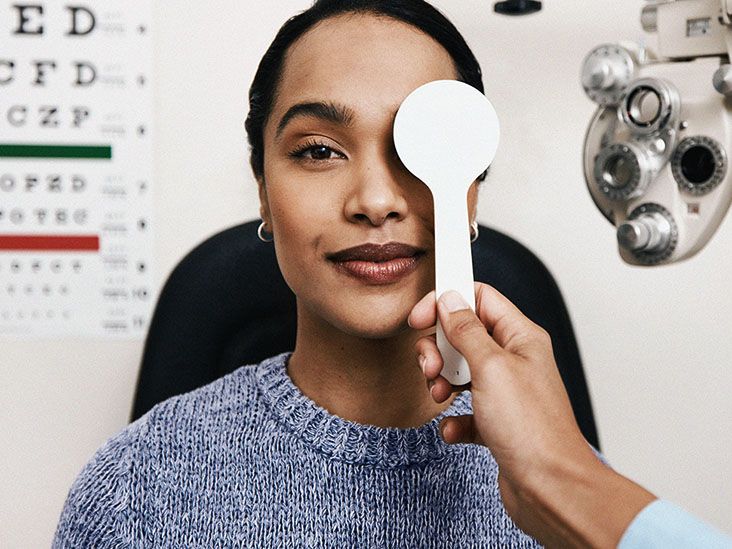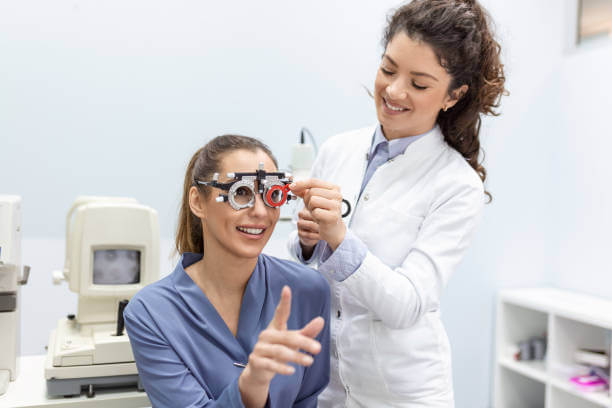Your Resident Eye Doctor Optometrist: Devoted to Clear Vision in Riverside
Your Resident Eye Doctor Optometrist: Devoted to Clear Vision in Riverside
Blog Article
The Comprehensive Eye Exam: What to Expect Throughout Your Visit to the Eye Physician
A visit to the eye physician for a thorough eye exam is greater than a regular check-up; it is an important action in guarding your aesthetic wellness. From the first discussion of your clinical background to the accuracy of the visual skill examination, each part of the exam offers a specific purpose. But what precisely happens during the eye health assessment, and just how does it affect the prescription procedure? Recognizing these components is necessary for those that wish to maintain optimum vision. As we explore each part, the relevance of follow-up suggestions will additionally end up being clear.
Initial Consultation
The first assessment throughout an eye examination acts as a vital foundation for understanding an individual's visual health needs. This stage sets the tone for the whole assessment process, enabling the eye doctor to gather essential info about the individual's case history, way of living, and specific vision concerns. By diligently evaluating any kind of pre-existing conditions, medicines, or previous surgeries, the eye treatment specialist can customize the evaluation to attend to individual demands properly.

Furthermore, the initial assessment is a chance for clients to voice any problems or questions, promoting a collaborative relationship with their health care supplier. This communication not just makes certain that the person really feels notified and comfortable but additionally encourages them to take part actively in their eye wellness administration. Collectively, these discussions make it possible for the optometrist to devise a personalized exam strategy, guaranteeing optimum care and precise medical diagnosis.
Aesthetic Acuity Examination
Starting the core elements of an eye exam, the visual skill examination is created to assess the sharpness and quality of a client's vision. This critical examination aids identify just how well an individual can discern letters or icons at a standard distance, usually using a Snellen chart (Eye Doctor Optometrist). The chart consists of rows of letters that lower in size inside out, with the patient positioned at a popular range of 20 feet
During the examination, the client is asked to cover one eye and review out loud the smallest line of letters they can see plainly. This process is duplicated for the various other eye. The results are taped as a fraction, with 20/20 vision indicating typical visual skill-- where the client can see at 20 feet what a person with regular vision can see at that range.
The aesthetic skill test also recognizes prospective refractive errors such as nearsightedness, hyperopia, or astigmatism, which may require corrective lenses. By establishing a standard of visual performance, the examination is an important analysis tool that aids the eye treatment specialist in developing an appropriate therapy strategy tailored to the person's one-of-a-kind visual needs.
Eye Health And Wellness Evaluation
Following the aesthetic acuity examination, a thorough eye health and wellness evaluation is carried out to make sure the total well-being of the eyes. This critical section of the eye examination involves an extensive analysis of both the outside and interior structures of the eye.
With the usage of ophthalmoscopy or fundus photography, the retina, optic nerve, and blood vessels are carefully examined. In several instances, pupil expansion is carried out to improve presence of the internal eye find more info frameworks, although this might result in short-term light sensitivity for the person.
Furthermore, intraocular stress is gauged to screen for glaucoma risk. This is commonly done utilizing tonometry, which can find raised pressure levels that might recommend prospective damage to the optic nerve. Collectively, these evaluations form a comprehensive analysis to maintain eye health and wellness.
Refraction and Prescription
Refraction is an advanced procedure conducted by eye treatment experts to identify the accurate lens power required to deal with refractive errors such as myopia, presbyopia, hyperopia, and astigmatism. The objective of this procedure is to analyze exactly how light bends as it passes via the eye, enabling the practitioner to establish whether restorative lenses are required for boosted visual skill.
Throughout the refraction procedure, the individual is asked to look through a phoropter, a tool that consists of various lenses. The expert will systematically transform these lenses and ask the client to contrast quality between alternatives until the very best possible vision is accomplished. This procedure is important in crafting an accurate prescription that defines the appropriate lens power for glasses or call lenses.
The prescription originated from this treatment not only enhances vision yet also acts as a foundation for choosing ideal corrective eyeglasses. It is vital to ensure that prescriptions are consistently upgraded, as adjustments in vision can take place with time, highlighting the importance of routine eye exams. This meticulous interest to information aids maintain clear, comfortable vision in everyday life.
Follow-Up Referrals

Throughout a follow-up visit, the eye doctor will perform a collection of examinations to evaluate visual skill and look for any type of changes in vision that might necessitate an update to the prescription. Additionally, the follow-up gives a possibility to discuss any discomfort or issues experienced with current eyewear. Modifications can be made to ensure comfort and effectiveness, whether via lens adjustment or frame changes.
For individuals with continuous problems such as glaucoma, diabetes-related eye problems, or macular degeneration, even more frequent follow-ups might be required. These consultations are critical for handling and possibly slowing down the progression of eye illness. Abiding by these suggestions can considerably add to preserving aesthetic health and wellness and avoiding lasting issues.
Conclusion
The detailed eye exam is an essential process for preserving aesthetic health and wellness, incorporating a comprehensive analysis of medical history and vision problems. Key elements consist of the visual acuity examination, which evaluates vision quality, and the eye health evaluation, which checks out the overall condition of the eyes. Refraction examinations aid identify the specific lens prescription necessary for optimal vision modification. Follow-up referrals offer support for recurring eye treatment, guaranteeing that any type of possible concerns are addressed quickly and successfully.
A my explanation check out to site link the eye medical professional for a thorough eye test is even more than a regular examination; it is a vital action in securing your visual health.Kicking off the core components of an eye examination, the aesthetic skill test is developed to assess the intensity and clarity of a client's vision.Following the aesthetic acuity test, a comprehensive eye wellness analysis is carried out to ensure the total health of the eyes. These sees enable the eye care specialist to keep an eye on changes in vision, upgrade prescriptions, and examine the overall wellness of the eyes. Secret components consist of the visual skill test, which evaluates sight clarity, and the eye wellness evaluation, which examines the general condition of the eyes.
Report this page